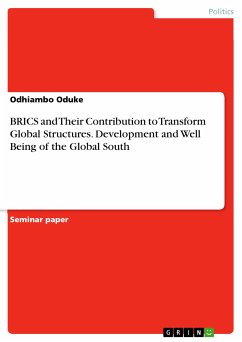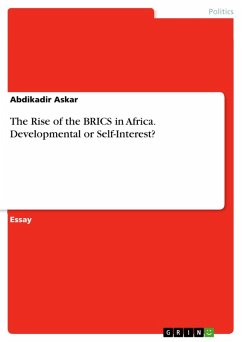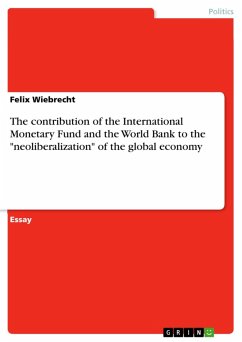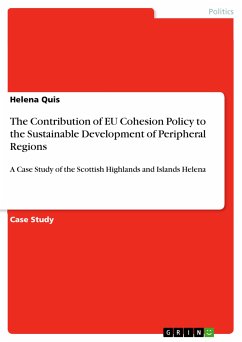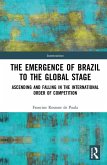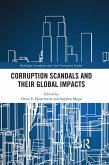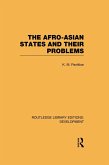Seminar paper from the year 2021 in the subject Politics - International Politics - Topic: International development, grade: 58%, Staffordshire University, language: English, abstract: This essay tries to shed light on the question of how the so-called BRICS can transform global structures beneficially for the Global South. BRICS being a coinage of Jim O'Neill, a global economist in Goldman Sachs in 2001 was a personal thinking and analysis which actually subscribed to the global character of the main issues which concern humankind. Ideally, BRICS countries are sovereign states which would wish to use their powers to shape multilateralism around their unilateral interests. BRICS countries make up 40 percent of the world's population(3 billion people). 20 percent of the world's GDP. In the same vein, it represents 18 percent of the world economy. It has 40 percent of gold reserves and currencies. The prognosticated projection is that the BRICS global GDP will be pegged at 60 percent by 2050 and the gold and hard currency reserves will appreciate by 300 percent by 2050. Above all, being collectively the world's largest market, the cumulative GDP has tripled in the last 10 years since its formation. According to IMF prediction and projection, BRICS economy has grown from 12 percent to 27 percent since 2001. Currently, BRICS hold about 3.93 trillion in foreign reserves and by 2050 it is projected that they will have about $13 .5 trillion of the world's total economic output. The GDP growth rate for BRICS countries is on a steady upsurge and cannot be compared with the other nations in the global South. The long-term projection it is noted that by 2050 BRICS could account for almost 50% of global equity markets. With the above descriptive 'accolades' for the BRICS countries and the majority of the countries are geographically situated in the South except for Russia. There are certain commonalities which these emerging nations share with the other nations in the global south. This makes them to be in a better and viable position to champion their interests and at the same time re-engineer some meaningful change at the global governance policy level. BRICS since its formation has advocated globally on major issues which affect the nations in the Global South. However, as they perform this valuable global advocacy they always preserve their political, economic and cultural identities as nations within the BRICS bloc.
Dieser Download kann aus rechtlichen Gründen nur mit Rechnungsadresse in A, B, BG, CY, CZ, D, DK, EW, E, FIN, F, GR, HR, H, IRL, I, LT, L, LR, M, NL, PL, P, R, S, SLO, SK ausgeliefert werden.

